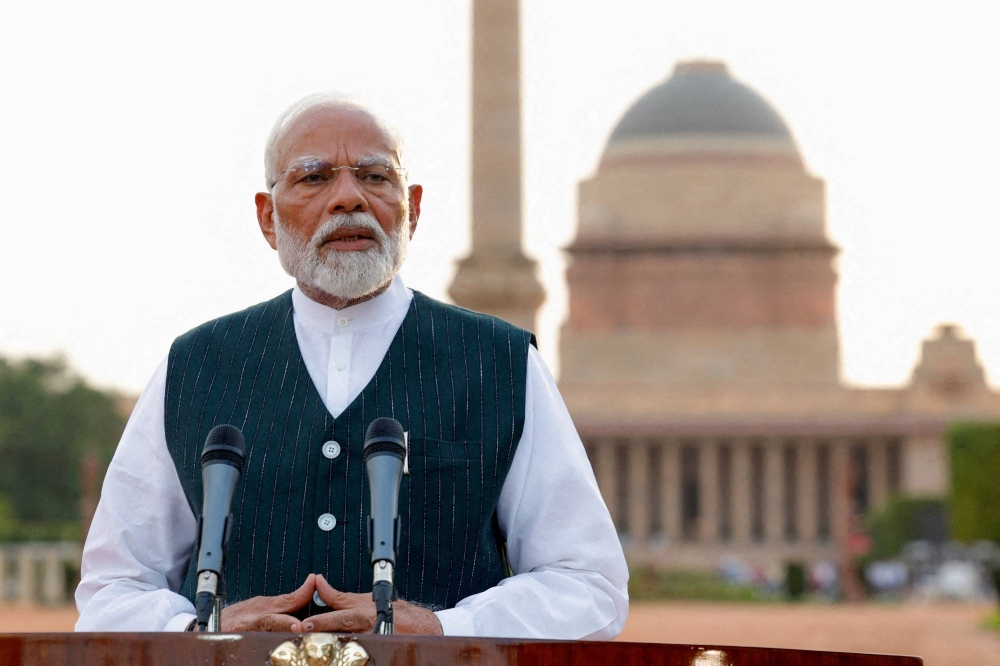Narendra Modi’s political journey has taken a complex turn post-2024, with internal challenges within the Bharatiya Janata Party (BJP) and increasing reliance on regional allies to sustain his government. After securing a third term in office, the BJP fell short of a majority in the Lok Sabha, winning only 240 seats, down from 303 in 2019. This forced Modi to form a minority government, heavily depending on key regional players and coalition partners.
Post-2024 Election Struggles
Modi’s third term began on shaky ground. The 2024 election results revealed growing public dissatisfaction with the BJP’s handling of the economy, particularly on issues such as inflation, unemployment, and inequality. The party’s emphasis on the Hindutva (Hindu nationalist) agenda, which was a cornerstone of earlier electoral victories, failed to resonate with many voters, especially in regions with secular or regionalist outlooks. Modi’s personal brand took a hit, with the BJP’s messaging on economic growth falling flat amid rising inequality and declining manufacturing output.
Key Allies Helping Modi Form a Minority Government
To form a functioning government despite the shortfall, Modi had to rely on several key regional allies:
- YSR Congress Party (YSRCP): Jagan Mohan Reddy’s YSRCP played a crucial role in providing Modi with parliamentary support. While Reddy maintains a careful distance from the BJP, his support was essential in exchange for financial aid to Andhra Pradesh, which is grappling with a fiscal crisis. .
- Janata Dal (United) [JD(U)] Faction: Nitish Kumar’s JD(U) experienced a split, with a smaller faction remaining allied with the BJP. This faction provided the BJP with critical seats in Bihar, helping Modi shore up his numbers.
- Shiv Sena (Shinde Faction): In Maharashtra, the split within Shiv Sena after Uddhav Thackeray’s exit left the Shinde faction loyal to the BJP. This alliance proved crucial in maintaining the BJP’s hold over one of India’s most politically significant states.
- Rashtriya Loktantrik Party (RLP): In Rajasthan, Hanuman Beniwal’s RLP lent its support to the BJP, adding to Modi’s parliamentary strength. The alliance was built on addressing local agrarian issues and farmer distress in the state.
- Naga People’s Front (NPF): In the northeast, smaller parties like the NPF have been long-term allies of the BJP, supporting Modi in exchange for greater autonomy and regional development packages.
- The Role of Nara Chandrababu Naidu
- Nara Chandrababu Naidu, the leader of the Telugu Desam Party (TDP), played a pivotal role in Modi’s earlier successes but has since become a vocal critic. Naidu’s TDP was a key BJP ally in 2014, helping Modi secure significant victories in Andhra Pradesh by leveraging Naidu’s influence in the region. However, tensions arose when the BJP failed to fulfill its promises of special status to Andhra Pradesh, leading to Naidu’s exit from the NDA in 2018.
- Despite this fallout, Naidu’s strategic significance remains, as his TDP holds considerable sway in Andhra Pradesh. Should Modi seek to bolster his numbers further in the coming years, Naidu could emerge as a potential ally once again, provided the BJP addresses regional grievances. Naidu’s ability to shift alliances based on pragmatic concerns makes him a pivotal figure in Indian coalition politics.
Internal Opposition Within the BJP
Despite Modi’s dominant position, dissent within the BJP has grown. Senior party leaders like Lal Krishna Advani and Murli Manohar Joshi have been sidelined, sparking discontent among party veterans. These figures, instrumental in the BJP’s earlier successes, have been critical of Modi’s centralized decision-making, which has consolidated power in the Prime Minister’s Office (PMO) and sidelined regional leaders.
There is also dissatisfaction among regional BJP leaders, especially in states like Maharashtra and Haryana, where local dynamics were neglected in favor of Modi’s national image during the election campaigns. This over-reliance on Modi’s persona, at the cost of addressing regional issues like farmer distress and unemployment, has drawn criticism from within.
The Rashtriya Swayamsevak Sangh (RSS), the ideological parent organization of the BJP, has also expressed concerns about the government’s focus on economic reforms and global diplomacy, which it believes detracts from the Hindutva agenda. The RSS’s grassroots mobilization remains crucial for the BJP, but ideological differences between the RSS and Modi’s government persist.
Upcoming State Elections: A Litmus Test for Modi
The upcoming state elections in Haryana, Jammu & Kashmir, Maharashtra, and Delhi will be crucial in determining Modi’s political future. These elections will test the BJP’s ability to recover from its declining popularity and the effectiveness of Modi’s alliances.
- Haryana: Scheduled for October 5, 2024, Haryana’s elections will be a test for the BJP as it faces rising unemployment and caste-based discontent. The Congress, led by Bhupender Hooda, and the AAP are positioning themselves as viable alternatives.
- Jammu & Kashmir: With elections in three phases from September to October 2024, this will be the first major electoral test in the region since the abrogation of Article 370. Regional parties like the National Conference and PDP are challenging the BJP on issues of autonomy and governance.
- Maharashtra: The BJP’s alliance with the Shiv Sena (Shinde faction) will be crucial in these elections. However, the Congress-led INDIA bloc is capitalizing on economic concerns such as inflation and agrarian distress. ).
- Delhi: Scheduled for February 2025, the Aam Aadmi Party (AAP), led by Arvind Kejriwal, will defend its governance record against the BJP’s attempts to make inroads into the capital.
Narendra Modi’s third term as Prime Minister is marked by a delicate balancing act between internal party dissent, regional alliances, and public dissatisfaction over economic issues. Key allies like YSRCP, Shiv Sena (Shinde faction), and regional players like Chandrababu Naidu have been instrumental in enabling Modi to form a minority government. However, the upcoming state elections and the internal opposition within the BJP present significant challenges. Modi’s ability to navigate these complexities will determine his and the BJP’s future in Indian politics.


